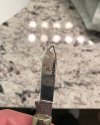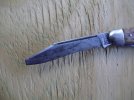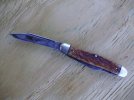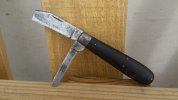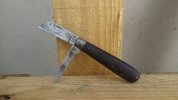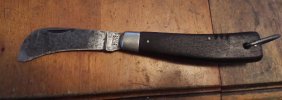Archie
Gold Member
- Joined
- Oct 4, 1998
- Messages
- 244
I see examples here of blades on traditionals that have been modified...spears made into clips, various secondaries made into wharncliffe or coping, etc. For those of y’all doing this kind of work, what tools and process are you using? I assume folks are using some sort of coarse material removal followed by some sort of smoothing or polishing to match original finishes. Is this strictly hand tools? Power tools taking care not affect heat treat?







